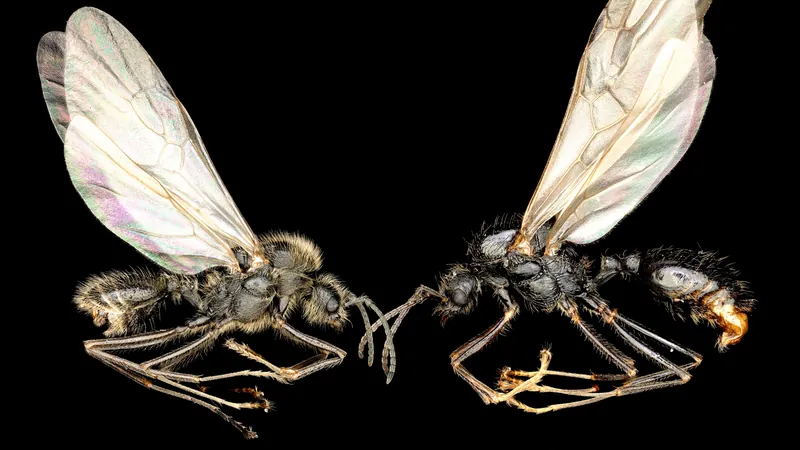
Mind-Blowing Discovery: European Ants Defy Nature by Cloning Another Species!
2025-09-12
Author: Rajesh
A Revolutionary Breakthrough in Reproductive Biology!
In a stunning revelation, researchers have uncovered that queens of the Iberian harvester ant (Messor ibericus) can produce male clones of a completely different species—tearing up the long-accepted rules of reproductive biology. This extraordinary finding forces scientists to reconsider the very essence of what defines a species!
The Mystery of Hybrid Colonies
Southern European colonies of Messor ibericus have been puzzling biologists, as they often lack the nearby presence of males from the related species, Messor structor. That's where the experiment began. Jonathan Romiguier, an evolutionary biologist at the University of Montpellier, noted their initial confusion seemed almost paradoxical. After investigating, researchers found that isolated colonies—without any M. structor males—were thriving.
A Shocking but True Discovery
Instead of simply mating to produce hybrid offspring, these queen ants exhibited a bizarre reproductive strategy: they lay eggs that hatch into male M. structor ants! This unprecedented phenomenon was documented in a groundbreaking study published in Nature on September 3.
Romiguier shared, "Initially, our findings seemed so extraordinary they felt almost like a joke, but we gradually realized we were onto something groundbreaking."
The Unique Social Structure of Ant Colonies
Ants are known for their eusocial behavior, which typically involves a colony structure made up of sterile female workers and reproductive queens. Males only exist to mate with queens and die shortly after. In the case of Iberian harvester ants, mating with their own species results only in new queens due to genetic factors favoring 'royal' offspring over workers. Thus, the need to mate with M. structor for reproduction.
How Did They Solve the Puzzle?
To unravel the mystery of these isolated colonies, researchers examined 132 males from 26 different colonies. They discovered a mix of hairy (M. ibericus) and hairless (M. structor) ants. But was it proof that queens were laying male eggs from both species? Delving deeper, they sequenced mitochondrial DNA and confirmed that the bald males were actually clones derived from M. ibericus mothers.
Xenoparity: A Revolutionary Term!
This new reproductive strategy has been dubbed "xenoparity," indicating the birth of male ants from a different species entirely. Romiguier and his team are now tasked with uncovering the mechanism behind this cloning process—an enigmatic puzzle that could reshape our understanding of species interactions.
Reactions from the Scientific Community
Denis Fournier, an evolutionary biologist from Belgium, expressed his astonishment at the concept of ants crossing species boundaries so effortlessly, stating it was "almost like science fiction!" He emphasizes how this unprecedented finding may provide solutions to long-standing biological puzzles and inspires further investigation into cooperation and conflict within nature.
What Lies Ahead?
As this groundbreaking research opens up new frontiers in evolutionary biology, scientists are left asking: when did this extraordinary cloning method emerge in Iberian harvester ants? The answer still remains as elusive as the ants themselves, but one thing is certain—this discovery is just the beginning of a thrilling journey into the complexities of nature.



 Brasil (PT)
Brasil (PT)
 Canada (EN)
Canada (EN)
 Chile (ES)
Chile (ES)
 Česko (CS)
Česko (CS)
 대한민국 (KO)
대한민국 (KO)
 España (ES)
España (ES)
 France (FR)
France (FR)
 Hong Kong (EN)
Hong Kong (EN)
 Italia (IT)
Italia (IT)
 日本 (JA)
日本 (JA)
 Magyarország (HU)
Magyarország (HU)
 Norge (NO)
Norge (NO)
 Polska (PL)
Polska (PL)
 Schweiz (DE)
Schweiz (DE)
 Singapore (EN)
Singapore (EN)
 Sverige (SV)
Sverige (SV)
 Suomi (FI)
Suomi (FI)
 Türkiye (TR)
Türkiye (TR)
 الإمارات العربية المتحدة (AR)
الإمارات العربية المتحدة (AR)